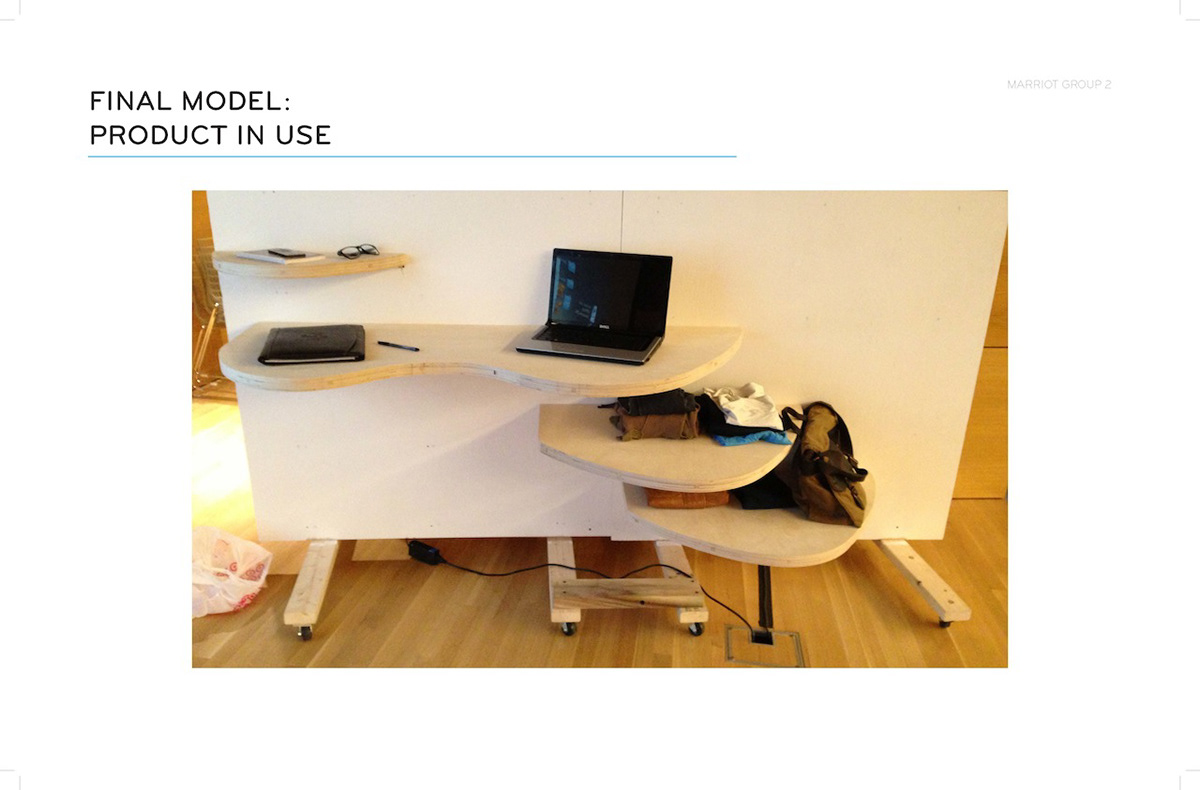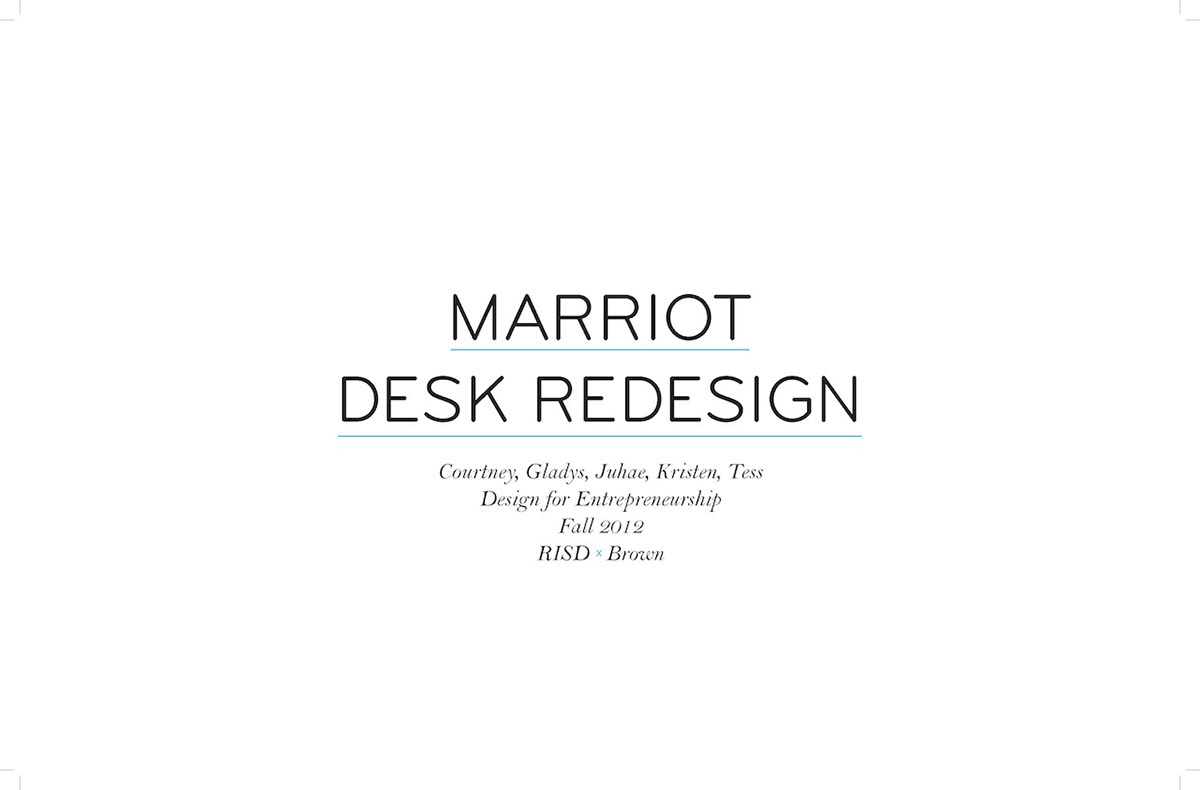
The goal for this project was to redesign the role of furniture in hotel rooms to respond to the changing needs of the modern traveler. Ultimately we produced a solution that could be manufactured at a cost of less than $600/unit per 1000 units, and created a functional prototype, while working through the entrepreneurial design process. The result was purchased by Marriott for further development and implementation.
(Group project with Juhae Lee, Gladys Ndagire, Courtney Brown, and Kristen Harada)
(Group project with Juhae Lee, Gladys Ndagire, Courtney Brown, and Kristen Harada)

We began by conducting a large quantity of interviews with people between the ages of 18 and 45, gauging the recurring issues people find with hotel stays. We focused on sifting through this mass of opinions, experiences, and discussions, and extracting what the deeper emotional and physical issues of the hotel-staying experience currently are.
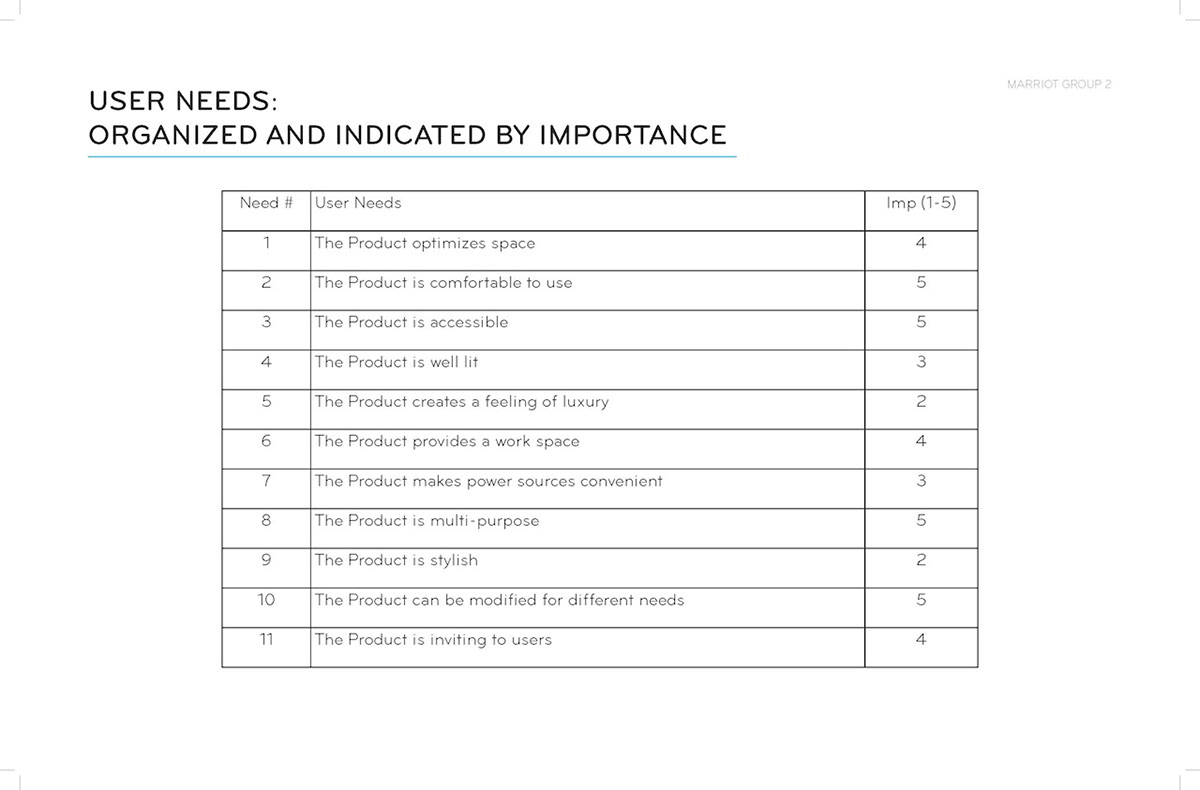
We found a series of user needs, some as simple as rethinking uncomfortable lighting, some raising complex issues, like finding a solution that reconciles the needs of the homesick guest with the needs of the guest who desires a respite from home. We created a user needs matrix, stating the nature and relative importance of each need.

Inspiration was collected, and concept generation and small-scale model-making began.
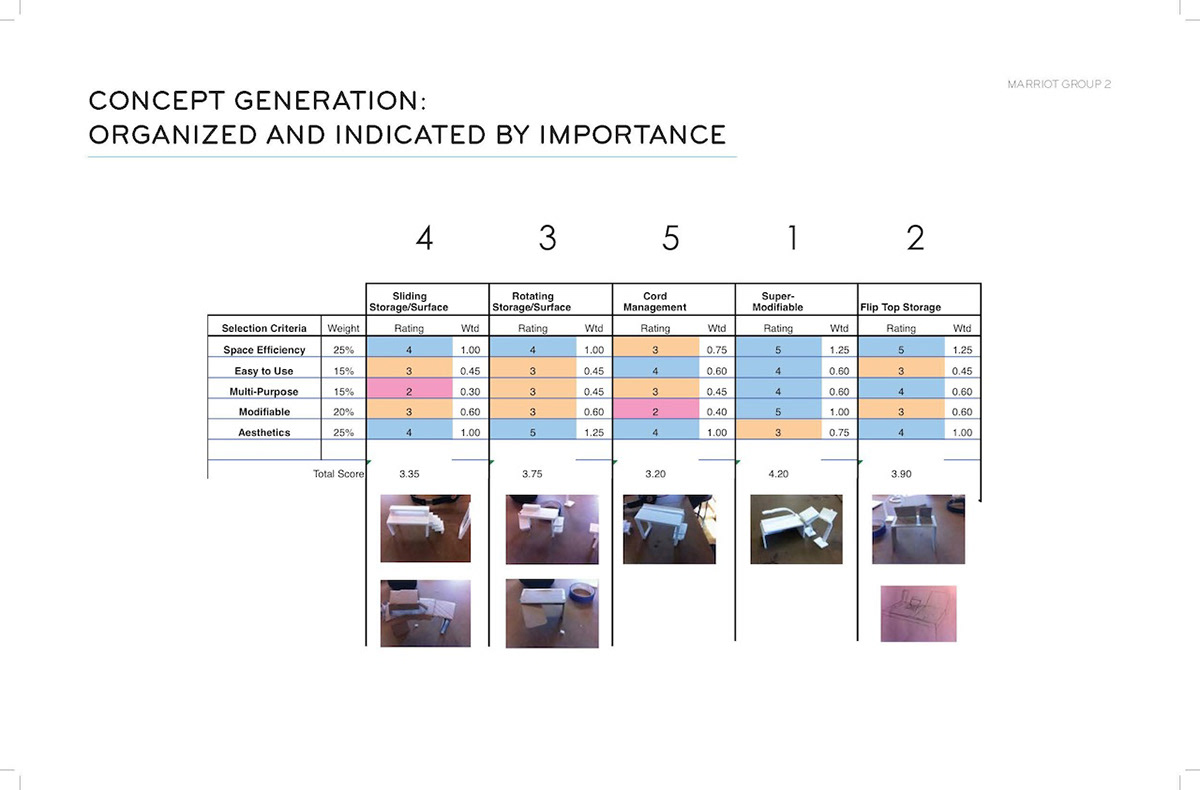
We refocused our concept generation by taking preliminary ideas and applying a selection matrix, with weighted selection criteria that reflected our user needs.
The final design places the user in the middle of the work space, encouraging a turn of the body away from the discouraging feeling of directly facing a wall. The visually open surfaces eradicate the issue of leaving small items in drawers or concealed areas in hotel rooms. The smaller shelves replace a dresser and luggage rack, allowing the series to consume an entire wall, while still providing the guest space to unload their possessions. The entire collection of surfaces is modular and modifiable, and built into a false wall to diminish structural damage and cost of replacement.
The final design places the user in the middle of the work space, encouraging a turn of the body away from the discouraging feeling of directly facing a wall. The visually open surfaces eradicate the issue of leaving small items in drawers or concealed areas in hotel rooms. The smaller shelves replace a dresser and luggage rack, allowing the series to consume an entire wall, while still providing the guest space to unload their possessions. The entire collection of surfaces is modular and modifiable, and built into a false wall to diminish structural damage and cost of replacement.
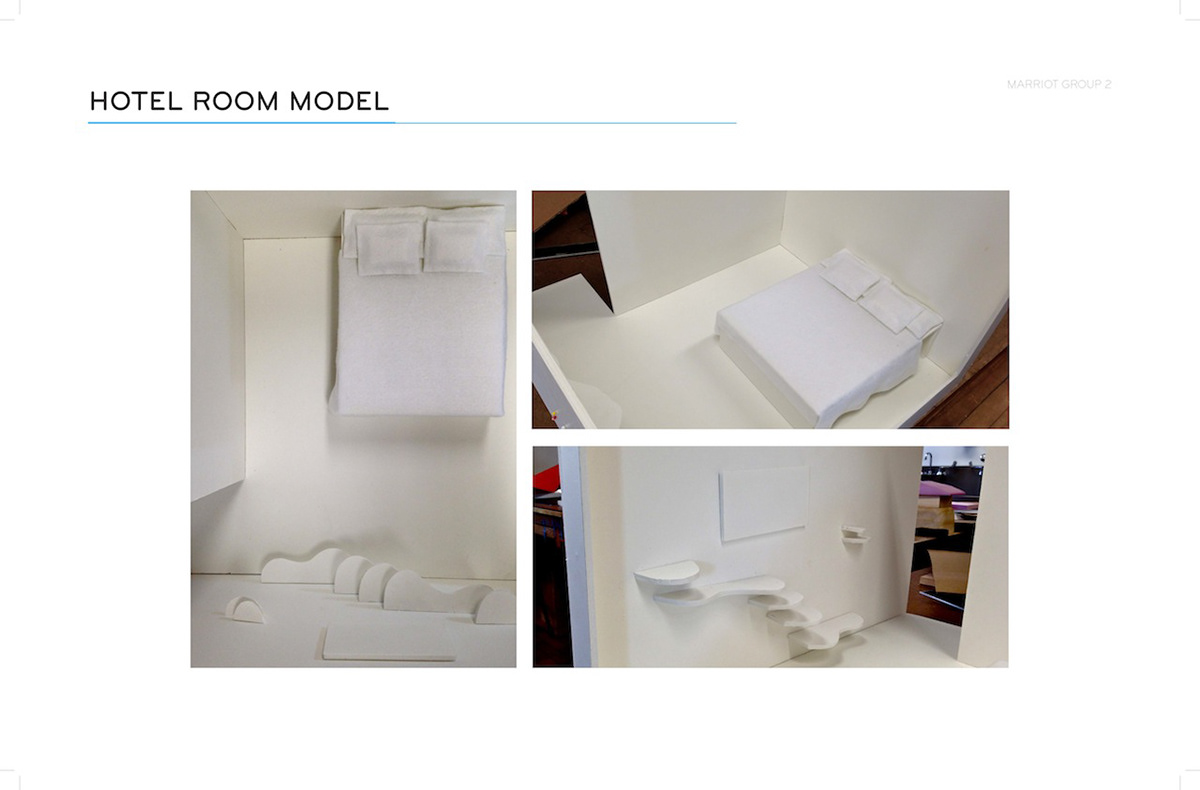
The scaled room model gave a sense of proportion, and an opportunity to play with how the concept would interact with the room as a whole.
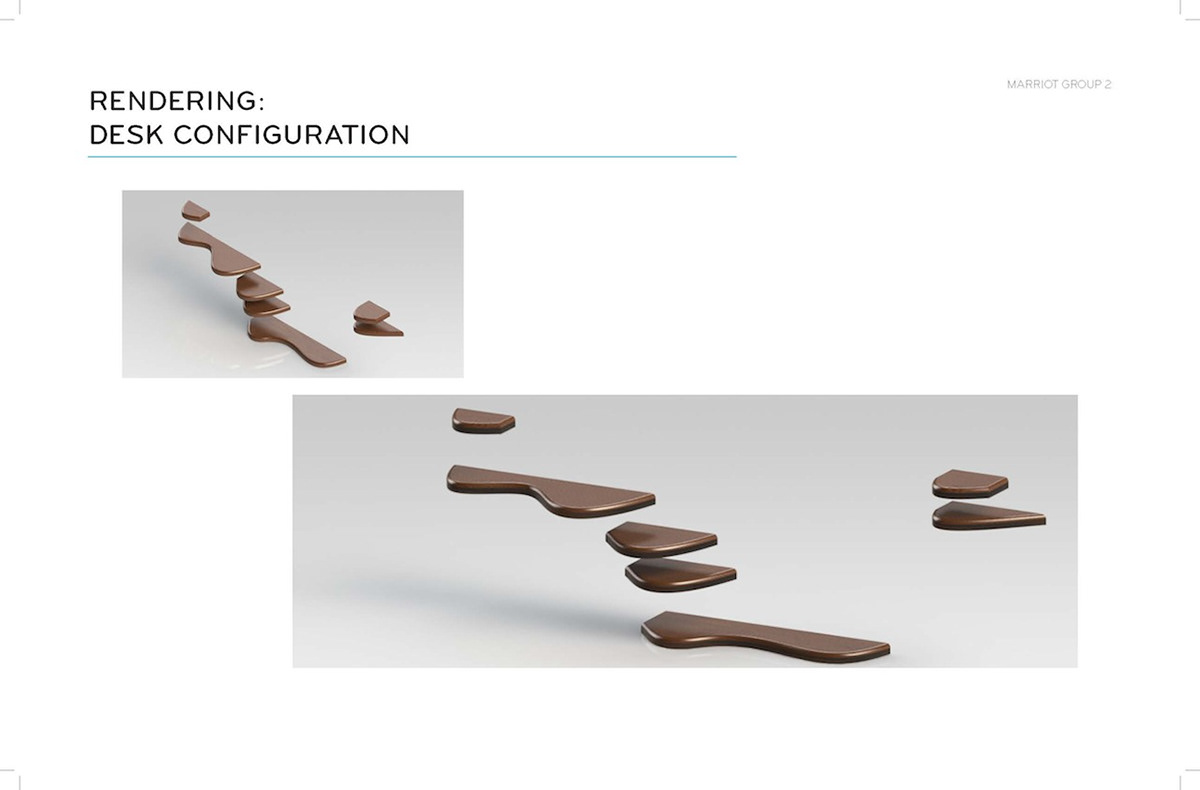
With CAD, we experimented with different materials as well as different profiles, and applied a realistic scale and proportion. We decided on Baltic Birch, being a relatively inexpensive material that is easy to stain or finish, while creating an interesting visual effect with the layered wood.
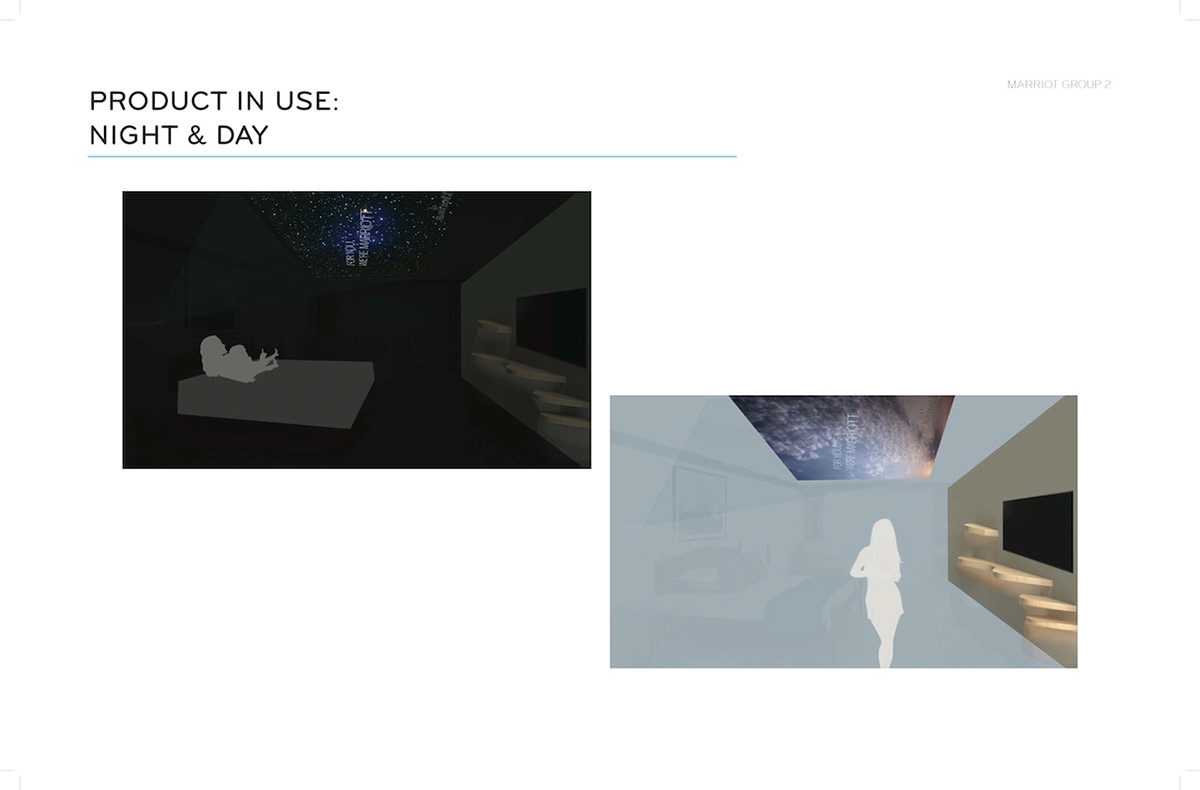
The design of the desk allows room for led strips installed underneath each unit, providing a "glow" appropriate and reactive to the room's setting. This solves the issue of harsh lighting, and allows the guest to alter the lighting to suit his or her desires.


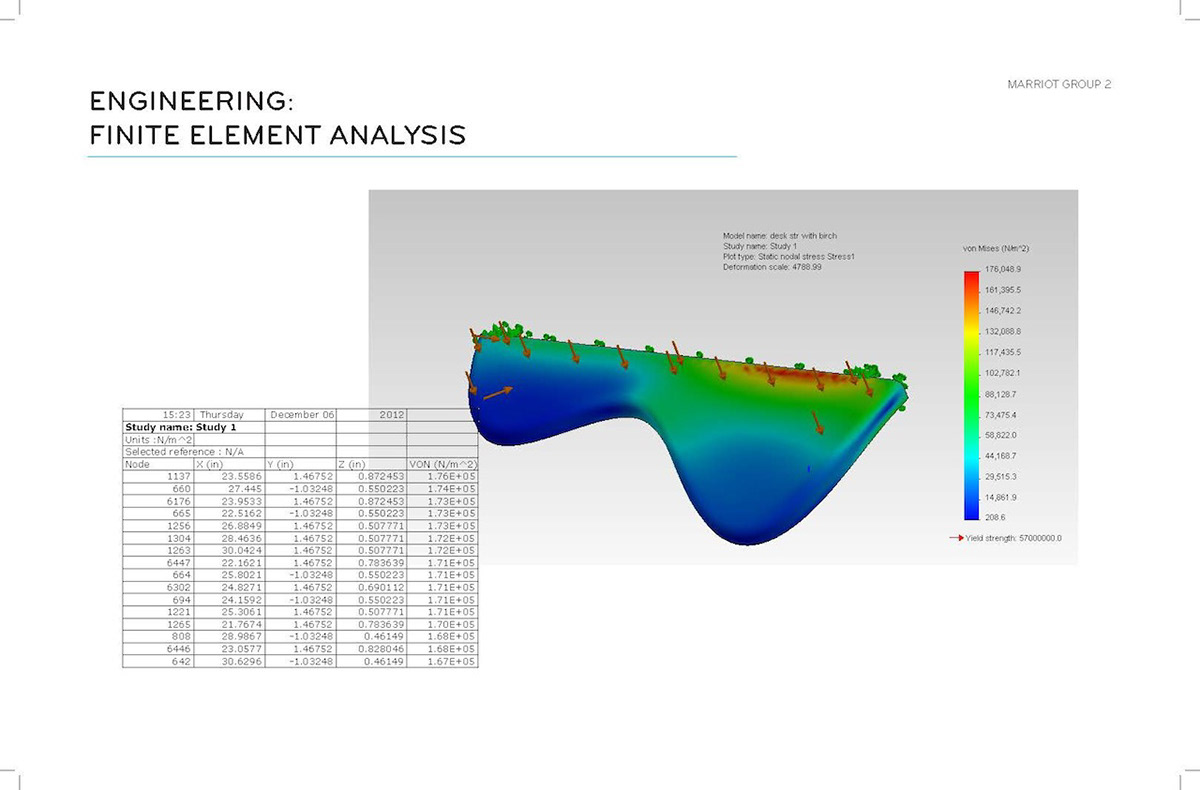
In response to our Finite Element Analysis, we decided to design the desk to attach to a cosmetic wall, removing the strain of connection to the wall, or the need to damage the walls in order to fix it to internal structural supports. The cosmetic wall makes the product easy to install and remove, without any permanent damage to the room or building structure, making its replacement in 5-10 years as easy as simply dismantling it.
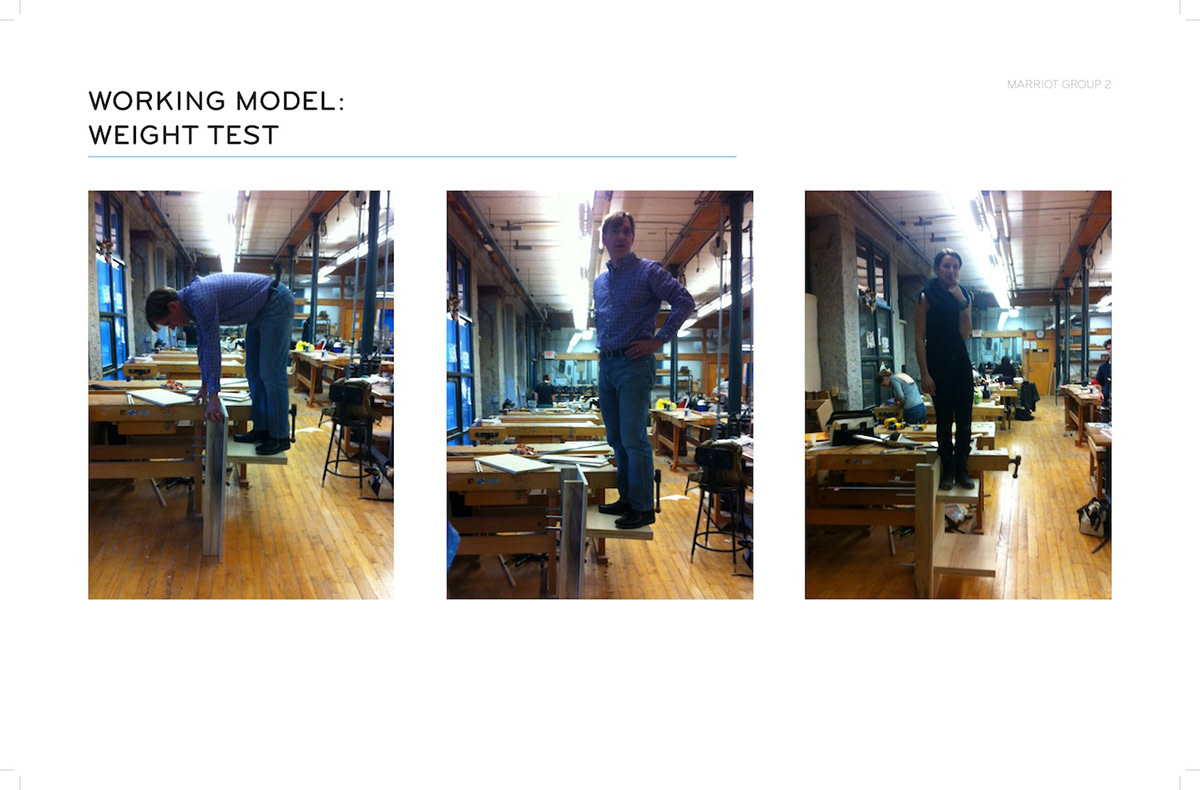
We found a simple structural solution to cantilevering the desk, using only a cross-dowel fixture, threaded rod, a washer, and locking nuts. The desk pieces need only be constructed as two pieces, with dadoed channels at regular 8" intervals along opposite faces, and appropriately drilled holes on the underside to accommodate the hardware. The two pieces are then glued together, the resulting square holes on the outside face plugged with standard-sized contrasting wood, and the edges are finished (preferably routed to a smoothed, rounded profile). This system transfers the load quite functionally, allowing each individual shelf to hold more than the weight of a person.
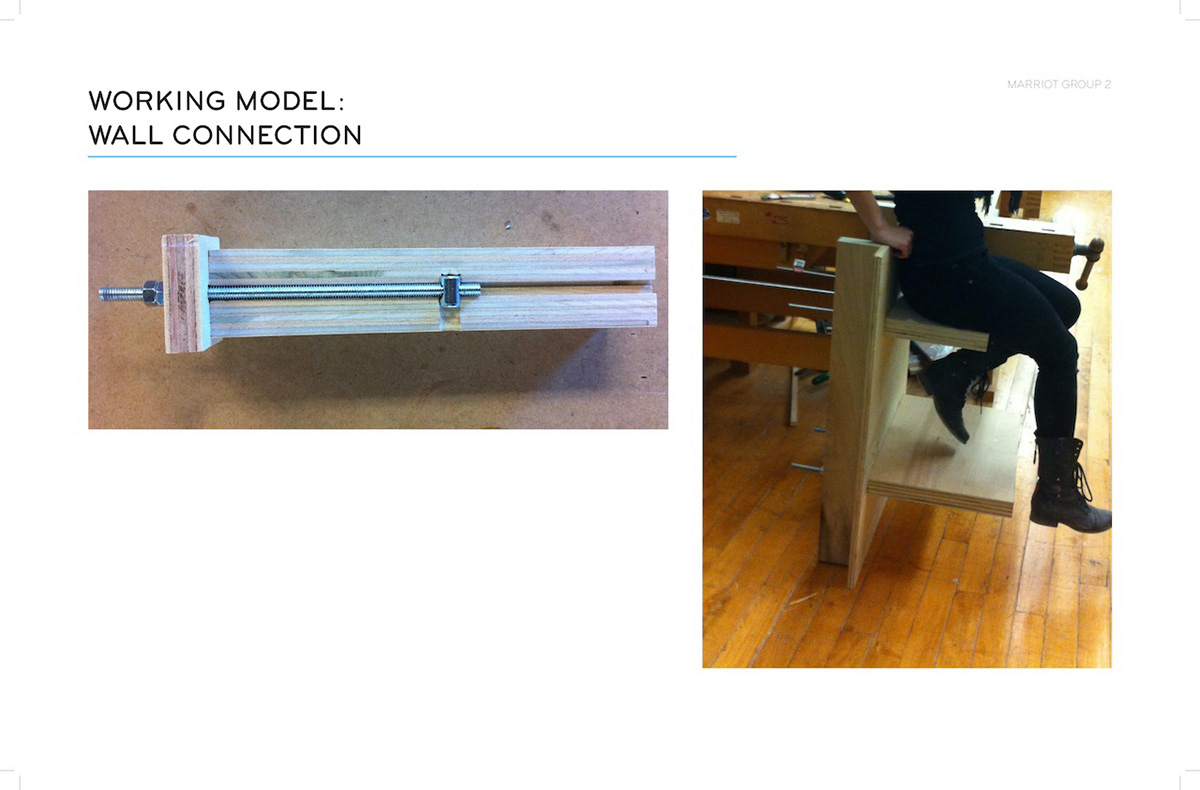
Affixing the shelves to the wall feature is as simple as threading the rod through the channels into the cross-dowel fixture, and locked in place with the nuts. This system allows the wall to be created with holes simply drilled at standard distances and at standard heights for each unit, making the system easy to customize or set up differently for different rooms. Reversing each shelf requires only drilling the holes for the hardware on the other face of the shelf.
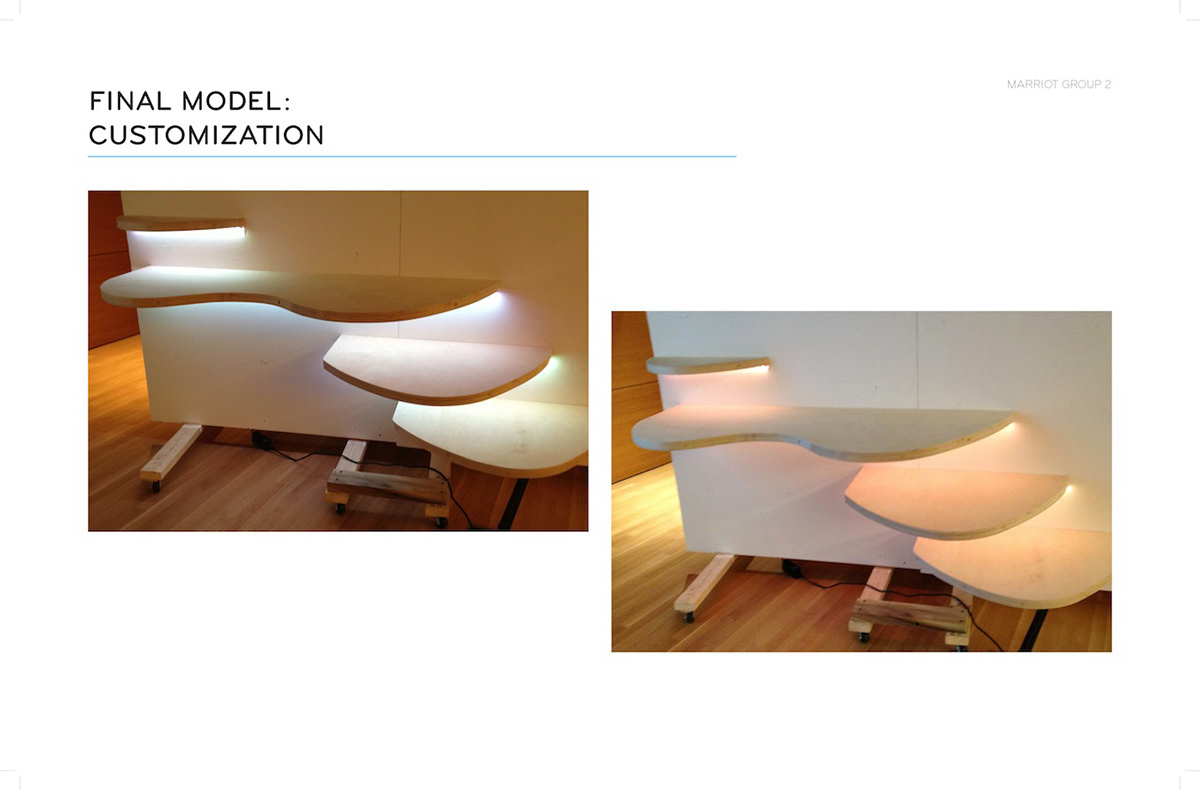
The final model allowed us to illustrate both the large storage and work-space capacity of the design, as well as the immediate striking visual impact of the form and lighting in conjunction with one another to set a mood.
